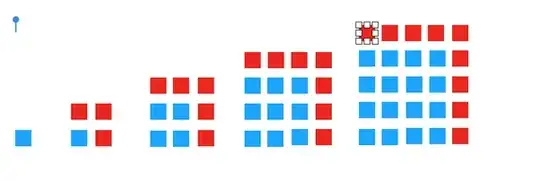I am absolutely not the first person to notice this, but I did notice that the difference between any two squares increases by 2, starting at 1(between $0^2$ and $1^2$). I am not the best at explaining, but it can be summarized in the equation below, where n is the number to be squared.
$n^{2}=\sum_{k=1}^{n}\left(2\left(k-1\right)+1\right)$
This isn't necessarily a question at all, just something I wanted to share. But there is a sort of question within this.
I have attempted to create a similar equation for cube numbers, and while I've gotten decently close, I haven't gotten there. I would imagine the equation would be similar to something like this: $n^{2}=\sum_{k=1}^{n}\left(6\left(k-1\right)+1\right)$ However, it doesn't work. I was wondering if anyone else could make an equation for this, although I don't expect anyone to. I noticed the difference between cube numbers was 6 instead of 2 for squares, but simply replacing 2 with 6 doesn't work. It could be due to something about how cube numbers work, as there is an added layer of multiplication, I don't know if that would make a difference. Anyway, have a good day. :)
